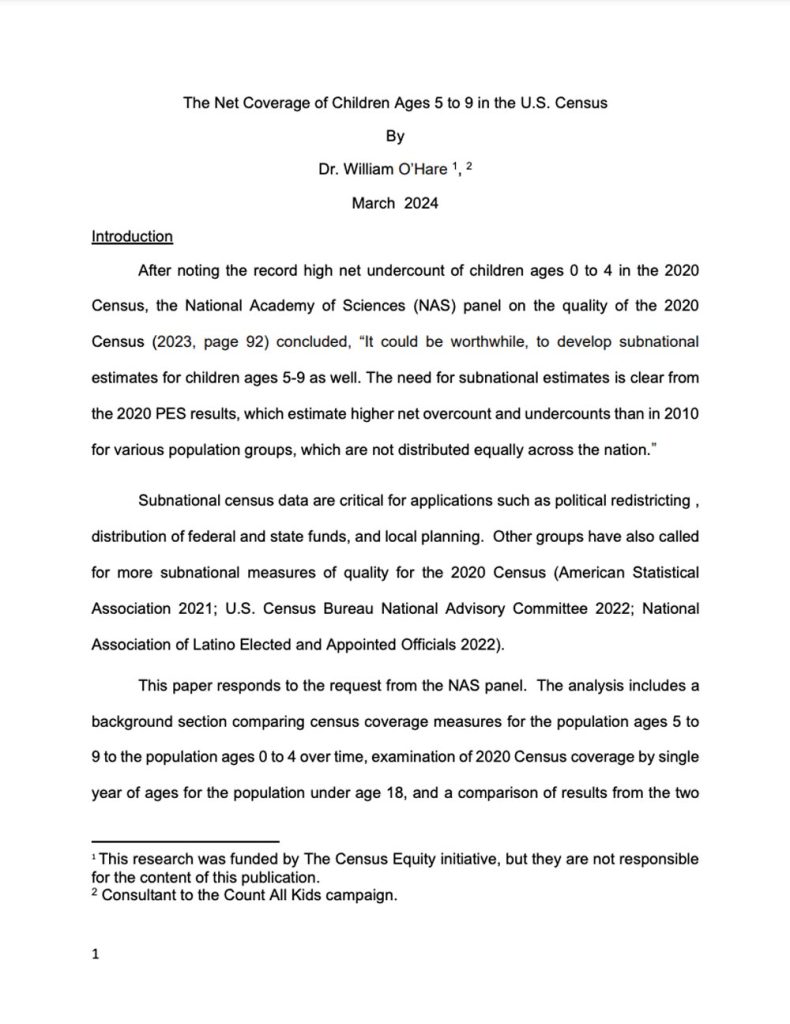This study examines subnational coverage for the population ages 5 to 9 and compares census coverage of children ages 0 to 4 to those ages 5 to 9. Young children (ages 0 to 4) have higher net undercount rates than children ages 5 to 9, and the pattern is pervasive and long standing. The pattern is seen across all the states and the vast majority of counties. Nearly all of the states (49 out of 50) have a net undercount for ages 0 to 4, but the minority (17 of 50) of states have a net undercount for ages 5 to 9. In every census since 1950 the net undercount for ages 0 to 4 was higher than the net undercount for ages 5 to 9 (except 1960 when they were tied). Based on DA and PES, the national net undercount rate for ages 5 to 9 is much lower than that for ages 0 to 4 in both the 2010 and 2020 Censuses.
There is a high positive correlation between the net coverage rates of children ages 0 to 4 and those ages 5 to 9 across the states. This suggests the factors and forces that lead to state level variation for the youngest children are also impacting the variation in accuracy of the enumeration of children ages 5 to 9, even though the level of coverage is different.
The patterns found here are consistent with survey evidence which shows many respondents are unlikely to list a young child (ages 0 to 4) on a census roster. One key determinant of whether or not a child is included in the census appears to be when a child enters school (usually around age 5). Overcoming the reluctance of respondents to include a young child on the census roster will be a key to improving the count of young children in the 2030 Census.









